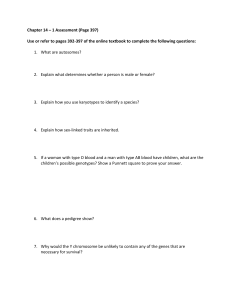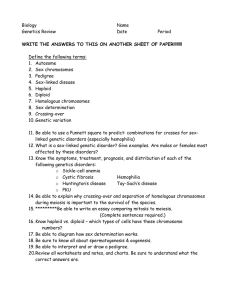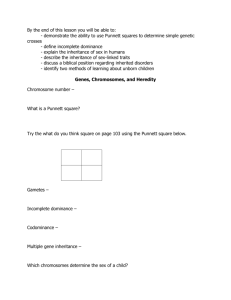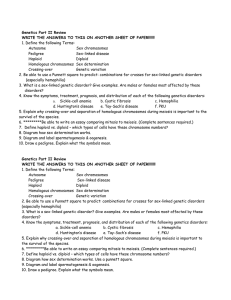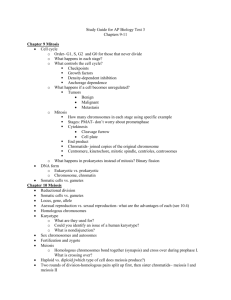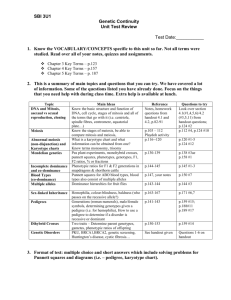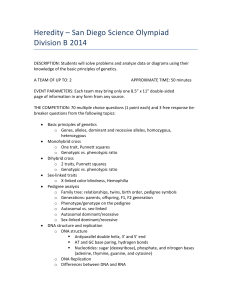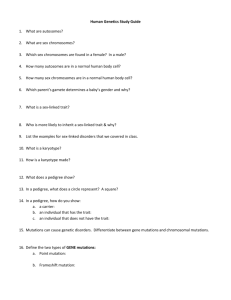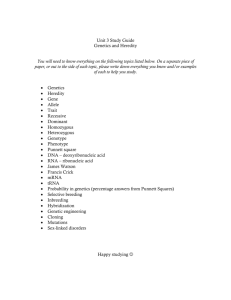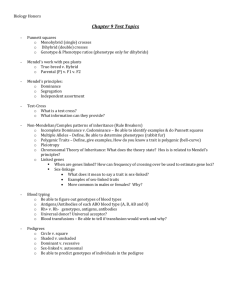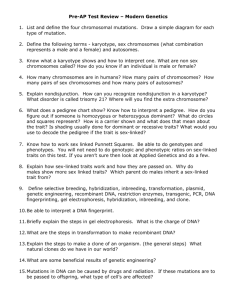Genetics Study Guide Name Period ______ Please answer all
advertisement
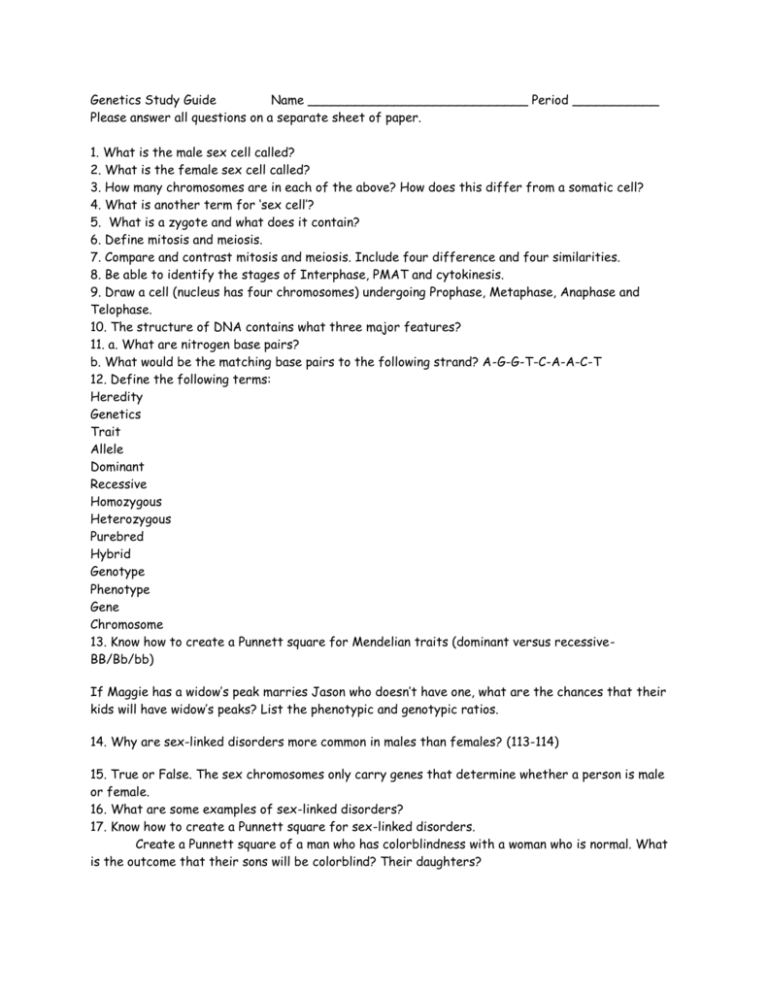
Genetics Study Guide Name ____________________________ Period ___________ Please answer all questions on a separate sheet of paper. 1. What is the male sex cell called? 2. What is the female sex cell called? 3. How many chromosomes are in each of the above? How does this differ from a somatic cell? 4. What is another term for ‘sex cell’? 5. What is a zygote and what does it contain? 6. Define mitosis and meiosis. 7. Compare and contrast mitosis and meiosis. Include four difference and four similarities. 8. Be able to identify the stages of Interphase, PMAT and cytokinesis. 9. Draw a cell (nucleus has four chromosomes) undergoing Prophase, Metaphase, Anaphase and Telophase. 10. The structure of DNA contains what three major features? 11. a. What are nitrogen base pairs? b. What would be the matching base pairs to the following strand? A-G-G-T-C-A-A-C-T 12. Define the following terms: Heredity Genetics Trait Allele Dominant Recessive Homozygous Heterozygous Purebred Hybrid Genotype Phenotype Gene Chromosome 13. Know how to create a Punnett square for Mendelian traits (dominant versus recessiveBB/Bb/bb) If Maggie has a widow’s peak marries Jason who doesn’t have one, what are the chances that their kids will have widow’s peaks? List the phenotypic and genotypic ratios. 14. Why are sex-linked disorders more common in males than females? (113-114) 15. True or False. The sex chromosomes only carry genes that determine whether a person is male or female. 16. What are some examples of sex-linked disorders? 17. Know how to create a Punnett square for sex-linked disorders. Create a Punnett square of a man who has colorblindness with a woman who is normal. What is the outcome that their sons will be colorblind? Their daughters? 18. If each of their sons marry a woman who is a carrier for colorblindness, what are the chances that their kids will have the disorder? 19. Make sure you know how to draw a pedigree. Use 17 and 18 to create a pedigree. 20. What are three methods that scientists have used to create organisms with desirable traits? 21. What is one goal of inbreeding? 22. What is the purpose of hybridization? 23. What are some examples of genetic engineering in our world today?
